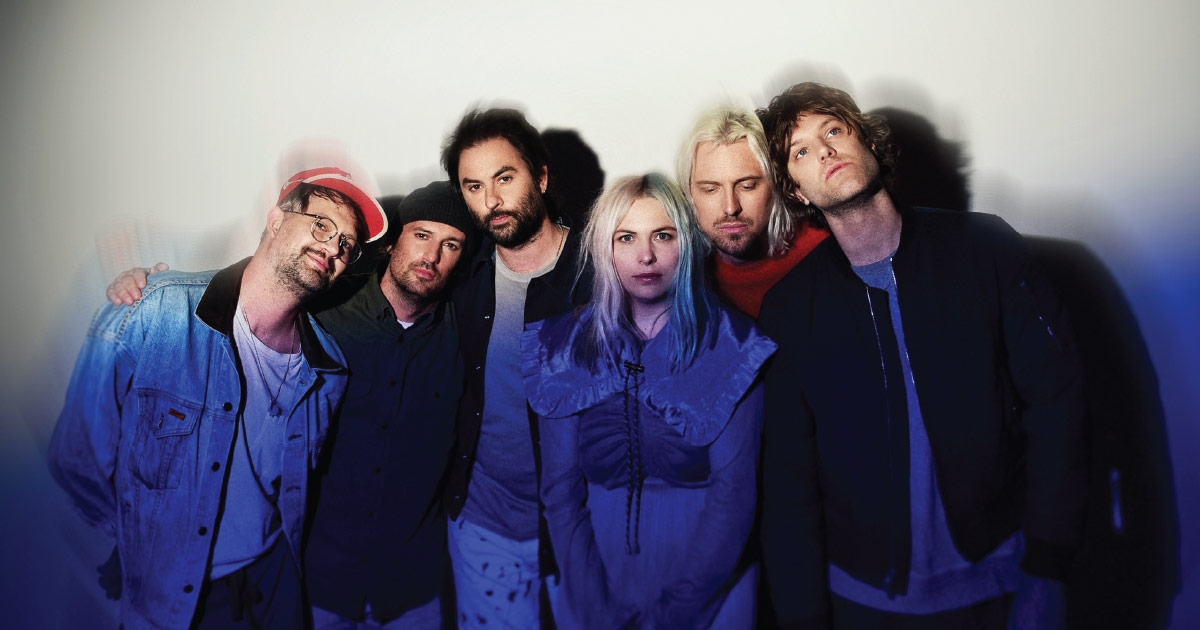"I got started playing drums when I was eight or nine,” said Tyler Williams, drummer of the indie-folk band The Head and the Heart.
“My dad introduced me to music. He was a bass player, so he was like, ‘Why don’t you play drums and your brother will play guitar, and we’ll have a family band.’”
Though Williams’ family didn’t end up forming a band, that didn’t stop him from joining one.
In 2009, Williams moved to Seattle from his home state of Virginia to become a founding member of The Head and the Heart, a six-piece band globally known for their earthy instrumentation and folk-pop melodies. Holding only a demo of the band’s now-hit track “Rivers and Roads” in his hands, Williams rocketed across the country with the dream of being signed to Sub Pop Records.
One year later, the Head and the Heart released their self-titled debut album with Sub Pop Records, which soared to number three on the Billboard U.S. Folk Albums chart–and fulfilled Williams’ dream. Selling more than half a million copies, the certified-gold record became the band’s framework for their prosperous career.
“[Sub Pop] was the Seattle label at the time,” Williams. said
“They signed the Shins, Fleet Foxes, Band of Horses, and going back to Nirvana, which is something that really influenced my drumming early on. It’s kind of legendary.”
However, nearly a decade later, The Head and the Heart’s six members could no longer ignore the strain that this early success put on their relationships with each other.
“It’s the same thing as in a relationship with anyone, whether it’s your family or your spouse or whoever it is. After a few years of being together, you start to say like, ‘Hey, what do you mean by that?’ And the baggage kind of piles up.
“When the band was starting, it was just a lot of go, go, go and chaos. You unintentionally hurt people or you say things that you don’t mean.”
Williams and the band decided to see a therapist in 2019 to help them resolve some of these interpersonal issues together.
“The first group session was pretty difficult. We were talking about stuff that we hadn’t really talked about, ever,” Williams said.
“It was uncovering a lot of old misunderstandings or resentments and then bringing them into the light, talking about ‘em, letting ‘em go.”
Since beginning therapy, the members of The Head and The Heart have learned how to better communicate with one another and access deeper, more vulnerable parts of their creative process. This has strengthened their relationship as a band and, perhaps unexpectedly, with their fans.
“Everyone has misunderstandings. Everyone feels slighted from time to time by people in their lives that they definitely love and care about,” said Williams.
“Getting to the bottom of that and kind of unlocking your ability to be vulnerable with each other is the goal for what we’re trying to do with music, it’s to be as vulnerable with each other as possible so we can kind of be that same way with our audience.”
When the pandemic hit, The Head and the Heart continued to attend group therapy online, which kept Williams and his bandmates in touch when they couldn’t see each other physically. Today, the band still uses online therapy.
“It feels like, as we do more sessions, it’s becoming more of a way for us to structure our thoughts as one organism, where we’re not so much focused on the past,” said Williams.
While The Head and the Heart may be the only band within their peer group to attend therapy, Williams says it’s a choice he wishes more musicians would partake in–especially today.
“It’s tougher out there than it ever has been for artists and costs have gone up exponentially. You’re leaving your family for less and less, and the take home is less and less,” said Williams.
“I think [group therapy] is a really important thing after going through it ourselves…To get to the bottom of things, it sometimes takes a mediator.”
Through their rebuilt relationships, The Head and the Heart was able to highlight all six member’s creative viewpoints on their latest record, Every Shade of Blue. The album is composed of 16 songs, which is an unusually long tracklist for today’s popular short-form album release strategy.
“We didn’t want to put out two records. We didn’t want to chop it down,” said Williams.
“We were like, ‘Let’s just put everything out there and give [fans] the whole perspective.’”
Every Shade of Blue pulses on pop melodies for the entity of its tracklist; veritably, it’s the album’s production that distinguishes each song. From slightly distorted vocals in the opening verse of Starstruck, to reverberant vapor-pop falsettos in Same Hurt, The Head and the Heart nod to genres outside of their folk aesthetic.
“As a drummer, the whole genre hopping thing that we do on that record is cool. I think that allows me to sort of step out of maybe what I would traditionally do, or maybe what you would hear on our earlier records,” Williams said.
“We kind of pushed all of our musical boundaries and comfort zones to be able to find a new place.”
Performing new songs before their release has historically been a crucial part of The Head and the Heart’s songwriting. But since shows were shut down while creating Every Shade of Blue, Williams played the album live after it had been recorded, which gave him a new perspective on the process.
“There are songs that maybe I didn’t even feel were my favorite when we put the record up that have now become my favorite, just because I get to see it through the audience’s eyes,” said Williams.
“I think it’s been cool for fans to realize that when they hear Virginia next to Down in the Valley, it’s like, ‘Oh, hey, that’s same song. It’s the same band.’”
The Head and the Heart will be performing songs off of Every Shade of Blue and more during their show at GLC Live in Grand Rapids on November 7.
With only a dream and a demo, Williams’ courageous decision to move across the country to form The Head and the Heart has unfurled five albums and a chart-topping career. As they soon celebrate 16 years as a band, The Head and the Heart remain committed to walking on this musical journey together–and with their therapist.
“We have a lot of kids in our band now, so it’s tough when you see the expenses and you’re also away from them for so long. So that’s kind of the next thing that we’re focused on, is how do we work on that?” said Williams.
“We don’t really know yet.”
However, it’s this struggle between listening to logic and emotion that first named The Head and the Heart. As their music captures a loyal fanbase that continues to crescendo, Williams and the rest of the band are glad they chose to become musicians, having listened to their hearts all those years ago.
“That’s still the ethos of this band,” said Williams.
“For better or for worse, honestly, I think it’s impossible for us to do something that doesn’t come from our guts, and from the heart.”
The Head and the Heart
GLC Live at 20 Monroe
11 Ottawa Ave. NW, Grand Rapids
Nov. 7, 7-11 p.m.





